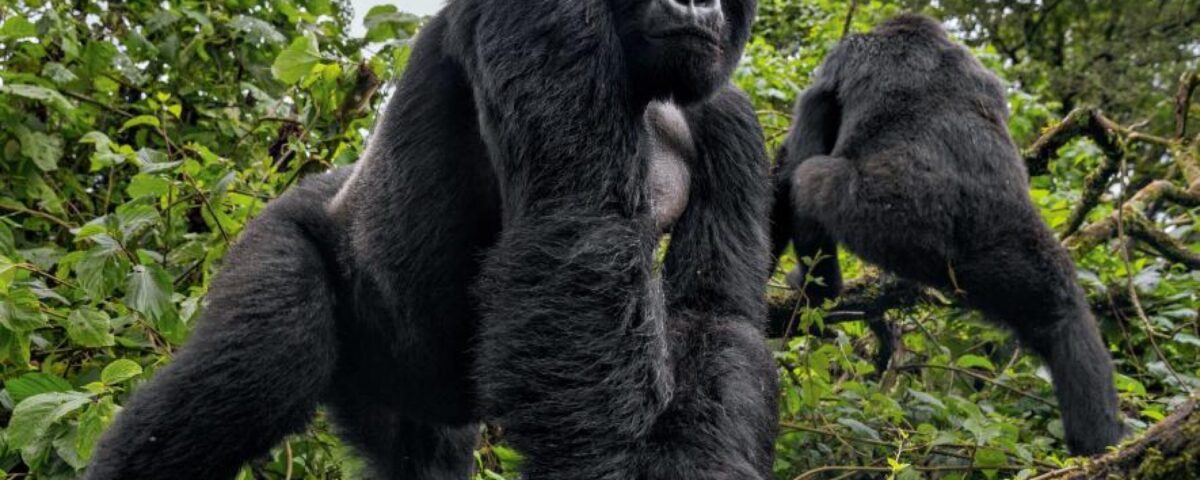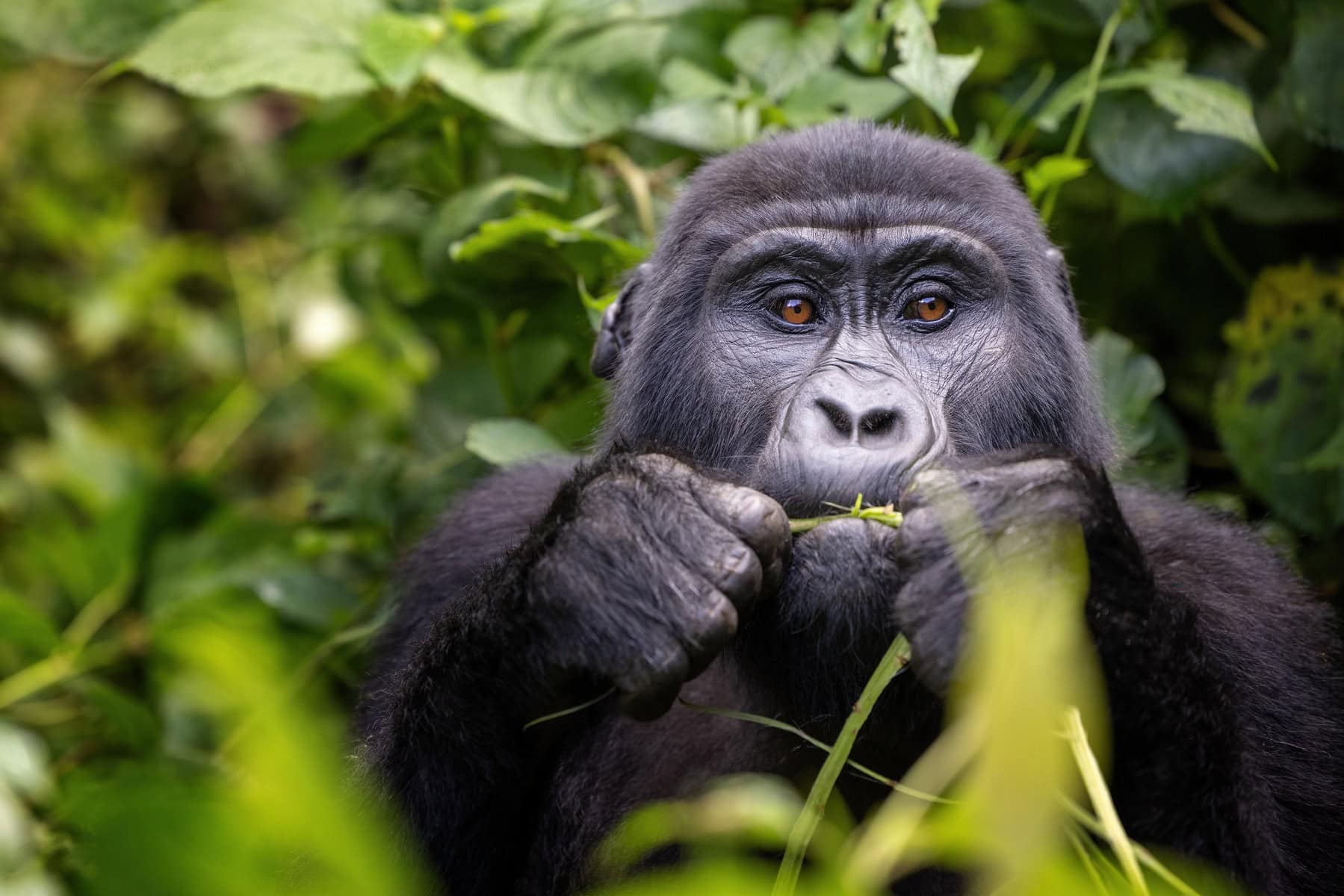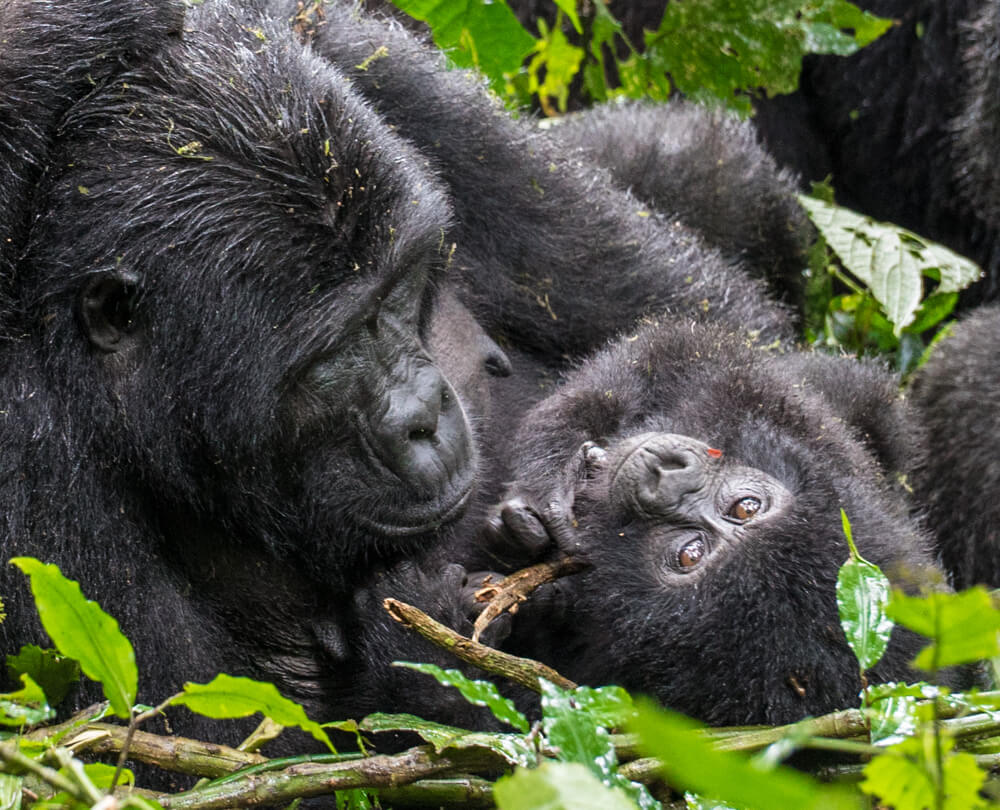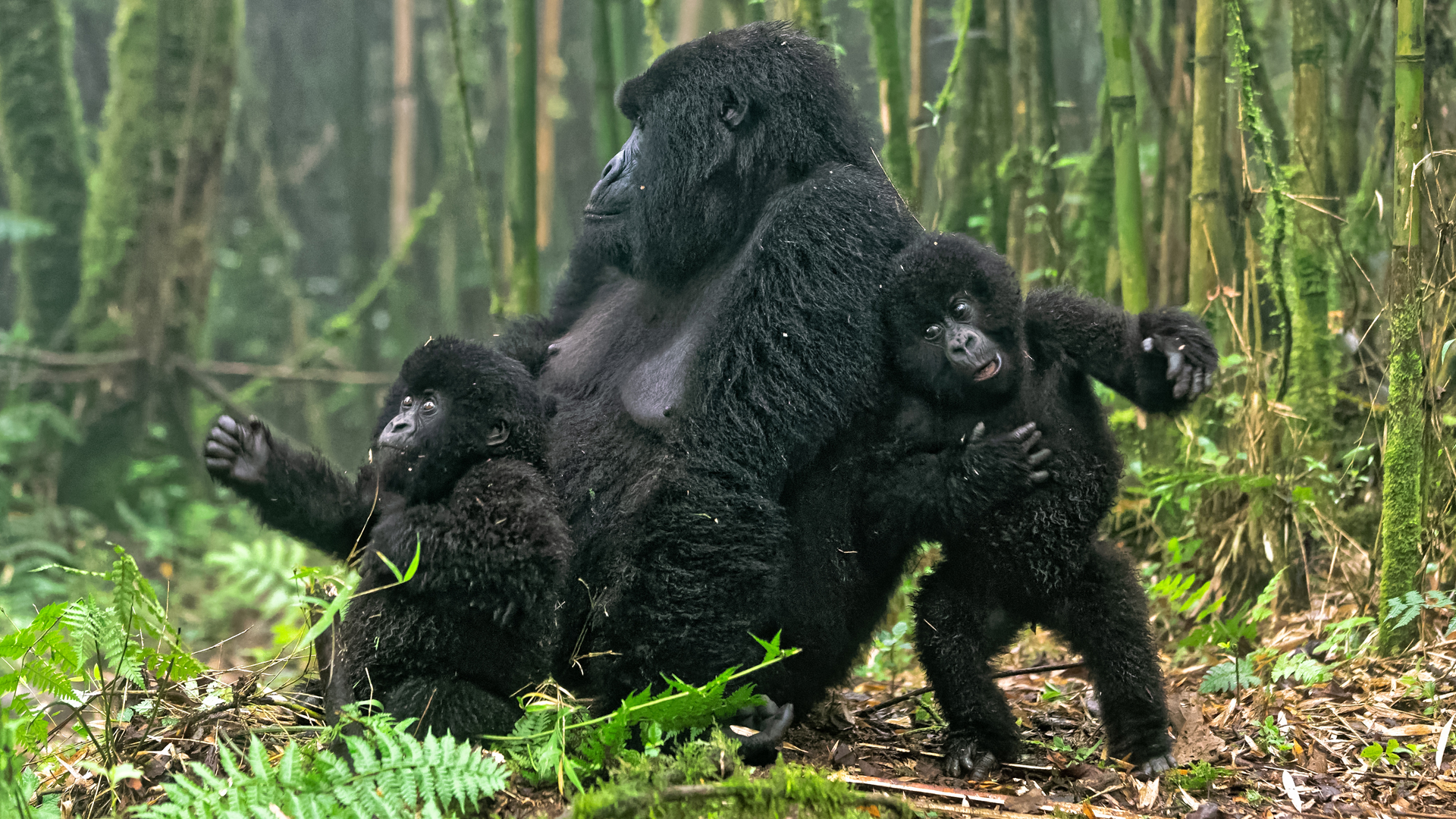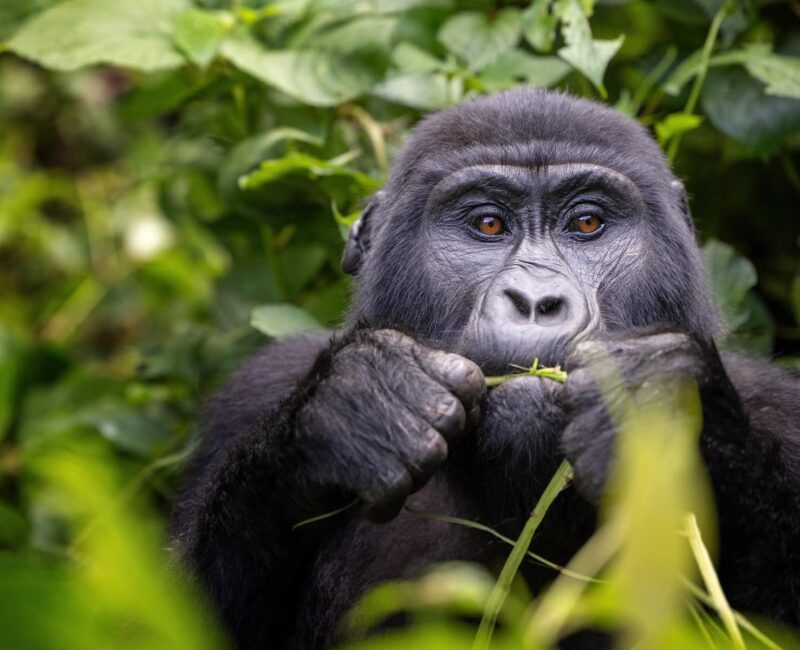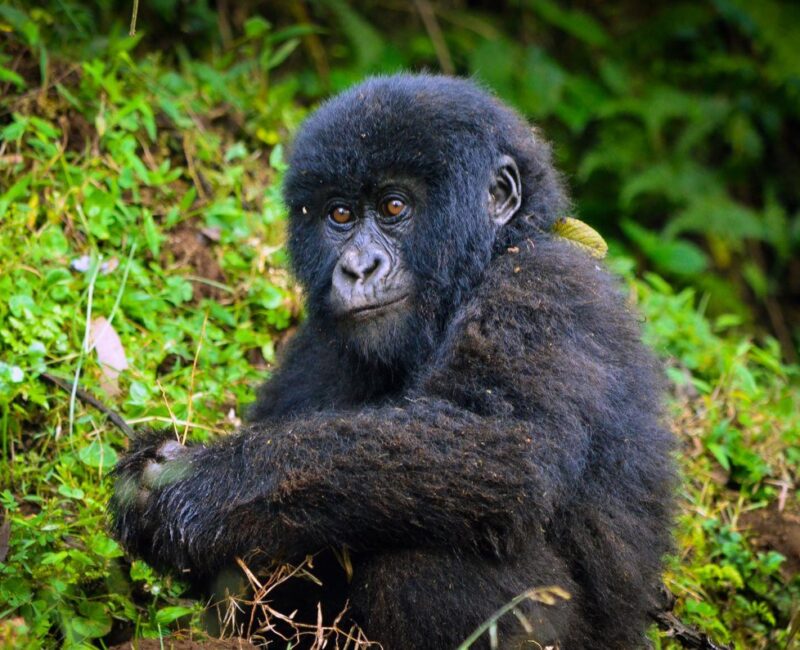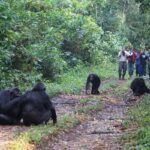
Primate Conservation Success in Uganda
September 30, 2025
Co-existence of Gorilla Families in Uganda
September 30, 2025Inside The Gorilla Family: Understanding Social Dynamics on a Uganda Gorilla Safari
Why Gorilla Family Structure Matters for Uganda Gorilla Trekking
One of the most fascinating experiences during a Uganda Gorilla Safari is observing the social behavior of gorilla families. When travelers embark on Uganda Gorilla Trekking in Bwindi Impenetrable National Park or Mgahinga Gorilla National Park, the sight of a cohesive gorilla troop often sparks questions: how do these families organize themselves, who leads, and what roles do individuals play? The gorilla family structure is one of nature’s most intricate systems of leadership, protection, and survival.
Each gorilla family, often called a troop, reflects remarkable order and balance. The group is typically led by a dominant silverback, supported by adult females, infants, juveniles, and sometimes younger males known as blackbacks. These dynamics form the foundation of what tourists see during Uganda Safaris Holidays. The behavior of each member influences the group’s stability, survival, and interactions with other gorilla families.
For visitors who choose Uganda Wildlife Safaris or combine gorilla trekking with other Uganda Tours, understanding these social structures provides a deeper appreciation of every encounter. Rather than simply watching gorillas, travelers discover the meaning behind their interactions. The gorilla family structure is not only about hierarchy—it is about unity, adaptation, and the resilience of Africa’s most iconic primates.
The Role of the Silverback: Leadership and Protection
At the center of every gorilla family stands the silverback, the mature adult male who carries the responsibility of leadership and protection. His distinctive silver hair across the back gives him the title, but his role goes far beyond appearance. The silverback determines where the troop feeds, when they move, and how they respond to external threats.
Tourists on Uganda Gorilla Trekking tours often notice how the group revolves around him. Females stay close to his protection, offspring climb on him playfully, and blackbacks show deference. He is both a guardian and decision-maker, keeping the group safe from leopards, rival males, or human interference. During a Uganda Gorilla Safari Holiday, guides frequently highlight how the silverback uses vocalizations, chest beating, or body posture to demonstrate strength.
However, leadership is not only about physical dominance. A successful silverback also displays social intelligence, bonding with females and building trust among family members. This combination of power and wisdom explains why gorillas thrive in structured family units. For travelers, observing the silverback in action is one of the most memorable aspects of a Uganda Gorilla Safari, revealing the balance between authority and care in nature’s hierarchy.

Mgahinga Silver Back
Females: The Heart of the Gorilla Family
While the silverback leads, the adult females form the core of the gorilla family’s stability. They nurture infants, forge bonds with the silverback, and maintain cohesion among members. In many cases, the silverback is the father of their offspring, making the family a true reflection of genetic continuity.
During Uganda Gorilla Trekking, visitors may notice females carrying infants on their backs or guiding playful juveniles through the forest. Their close relationship with the silverback ensures protection for their young, while their cooperation within the troop strengthens group unity. Females also influence the dynamics by transferring between families. When they leave their natal group to join another, they reduce inbreeding and increase genetic diversity.
Tourists on Uganda Wildlife Tours often find the interaction between mothers and infants particularly endearing. These scenes highlight the gentleness of gorillas and contrast with the common perception of them as only powerful animals. In truth, females display patience, care, and resilience that make the gorilla family structure both nurturing and efficient. For trekkers, this emotional connection is often the highlight of their Uganda Safaris Holidays.
Offspring: Infants and Juveniles in Gorilla Families
Infants and juveniles bring energy and vitality to the group. Infants cling to their mothers during the first few years of life, completely dependent on maternal care. As they grow, they become playful, adventurous, and mischievous, testing boundaries within the troop. Their interactions are a delight for travelers on Uganda Gorilla Safaris, as young gorillas often display behaviors that mirror human childhood curiosity.
Juveniles, slightly older than infants, practice skills they will need as adults. They climb trees, forage independently, and engage in mock play-fights that prepare them for future dominance or maternal roles. On a Uganda Safari Holiday, trekkers frequently find themselves captivated by the playful nature of these young gorillas. Their energy keeps the family lively, while their learning ensures the survival of the species.
For conservationists, the presence of healthy offspring reflects the success of Uganda Wildlife Safaris in promoting sustainable tourism. Each infant represents hope for the future of mountain gorillas. For travelers, observing them in the wild transforms a simple trek into a heartwarming experience, reinforcing the importance of protecting these primates for generations to come.
Blackbacks: Future Leaders or Wanderers
Blackbacks, the younger males in gorilla families, stand at a crossroads between loyalty and independence. They are typically aged 8 to 12 years, not yet mature enough to become silverbacks but strong enough to contribute to the group’s protection. Some blackbacks remain within their natal troop, supporting the silverback and waiting for a chance to rise in dominance. Others eventually leave, striking out on their own to form new families.
This stage of life is one of transition and uncertainty, but it is also essential for maintaining genetic diversity. For trekkers on Uganda Gorilla Trekking expeditions, spotting blackbacks gives insight into the future leaders of the gorilla population. Observing how they interact with the dominant silverback and younger gorillas highlights the delicate balance of authority and respect within the troop.
The journeys of blackbacks also demonstrate the dynamic nature of gorilla society. By leaving their natal groups, they reduce competition and open opportunities for females to join new troops. This movement ensures that each Uganda Gorilla Safari offers tourists a chance to witness evolving family structures, keeping every trekking experience unique.
Group Dynamics: Cooperation and Conflict
The gorilla family structure thrives on cooperation, but it is not without conflict. The silverback enforces order, but disputes can arise over food, mating rights, or dominance. In rare cases, a takeover occurs when a younger male challenges the dominant silverback. Such moments, though dramatic, demonstrate the constant evolution within gorilla society.
Tourists on Uganda Safaris Holidays may also hear about infanticide, a harsh reality when a new silverback takes control of a group. By eliminating the infants of his predecessor, the new leader encourages females to mate with him, ensuring his genetic legacy. While difficult to witness, this behavior is a natural survival strategy and part of the complexity that makes gorillas so fascinating.
On the positive side, the bonds within families are incredibly strong. Grooming, playing, and vocal communication all reinforce unity. These interactions reveal a sense of empathy and care that resonates deeply with travelers on Uganda Wildlife Safaris. Observing these dynamics during Uganda Gorilla Trekking offers lessons about resilience, cooperation, and the challenges of leadership in the natural world.
Species Variation: Comparing Eastern and Western Gorillas
While Uganda is home to the endangered mountain gorillas, understanding variations across gorilla species enriches the trekking experience. Eastern gorillas, which include the mountain gorillas of Bwindi, sometimes form multi-male groups where related silverbacks coexist peacefully. This structure reflects the cooperative leadership style occasionally observed in families like Bitukura.
In contrast, western gorillas often form single-male groups. One silverback monopolizes access to females, creating a more rigid hierarchy. For tourists on Uganda Wildlife Tours, these differences highlight the uniqueness of mountain gorillas. Their ability to maintain multi-male families demonstrates remarkable adaptability and tolerance.
By learning about these variations, travelers on Uganda Safaris appreciate why Uganda’s gorilla trekking stands apart. The diversity of family structures adds depth to the safari holiday, ensuring visitors leave with a broader understanding of primate behavior. This knowledge strengthens the global reputation of Uganda Gorilla Safaris as a premier tourism experience.
Cultural Experiences Around Gorilla Trekking Lodges
A Uganda Safari Holiday is not limited to gorilla trekking. Lodges near Bwindi and Mgahinga provide cultural encounters that complement the study of gorilla families. Visitors can interact with the Batwa community, the traditional forest dwellers, who share their stories of life alongside gorillas.
Cultural performances, guided village walks, and local craft workshops add dimension to Uganda Tours. Tourists not only learn about gorilla family structures but also discover the human communities dedicated to their conservation. By blending wildlife encounters with cultural immersion, a Uganda Wildlife Safari becomes a transformative journey.
This integration of culture and conservation ensures that every Uganda Safari Holiday is more than just a trek—it is a celebration of heritage, biodiversity, and responsible tourism.
What Gorilla Family Structure Teaches Us
The gorilla family structure represents one of the most compelling aspects of nature. From the dominance of the silverback to the nurturing roles of females, from playful infants to ambitious blackbacks, every member contributes to the family’s survival.
For travelers on Uganda Gorilla Safaris, understanding these dynamics elevates the trekking experience. Instead of merely watching gorillas, visitors witness the essence of leadership, cooperation, and resilience. Each Uganda Safari Holiday becomes a journey into the heart of gorilla society, where every role matters and every interaction tells a story.
By choosing Uganda for Gorilla Trekking, travelers not only enjoy unforgettable adventures but also support conservation and community development. The gorilla family structure is a reminder that survival depends on unity, and protecting these primates ensures that future generations can share in their story.

